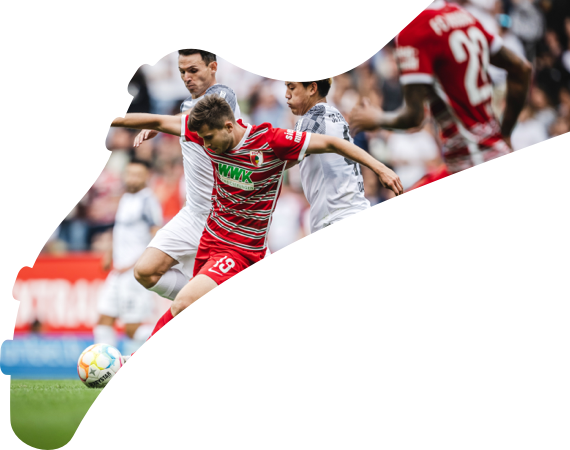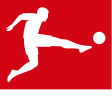A short history of the official Bundesliga soccer ball
Legendary Bayern Munich coach Jupp Heynckes once described the soccer ball as, "along with boots, the most important product in football". The decorated former player and tactician is not the only one to herald the humble ball; the German language itself does so, too, with the term 'Spielgerät', commonly used in reference to the ball, translating as 'game equipment'.
Given its significance, the history of the soccer ball has too often been overlooked. With that in mind, allow bundesliga.com to trumpet the fascinating backstory of the famous leather sphere in Germany and in Europe.
The first football match on German soil took place in Braunschweig (home of now third-tier club Eintracht Braunschweig) in October 1874. A pair of local teachers, Konrad Koch and August Hermann, provided a ball ordered from England for their pupils to play with, and before long the game was commonplace in schools across the country.
There were a few changes down the years, most notably that the cowhide used for the soccer ball was tanned not greased – leading to a yellowish colour in the mid-1950s – with three leather strips stitched on, rather than a uniform leather covering, leading to slightly triangular-shaped balls.
Remarkably, the leather soccer ball was used for almost a century, despite the fact that it became heavier in rainy or wet conditions, the knock-on effect being that the quality of the game decreased.
Germany managed to win the FIFA World Cup in 1954 with a leather ball, which was also in use upon the foundation of the Bundesliga in 1963.
The first real revolution in soccer ball history came at the 1970 FIFA World Cup in Mexico, won by Brazil. As the manufacturer of the official ball for the tournament, adidas developed a soccer ball based on shapes from Ancient Greek arithmetic: the Telstar ball was formed of 12 black pentagons and 20 white hexagons, stitched together in a perfect circle. The colours were chosen so as to be immediately recognisable on black-and-white televisions of the era.
In the Bundesliga, until the introduction of the adidas TORFABRIK soccer ball in 2010/11, different clubs used different balls, as it was their prerogative as the home team to decide which ball would be used for a game.
A single soccer ball was used for all 306 Bundesliga matches in the 1979/80 campaign, but the idea of using a universal ball indefinitely was only agreed upon for the start of the 2010/11 season, when the DFL signed a contract with German sportswear manufacturer adidas to supply TORFABRIK soccer balls for the next five seasons. Previously, a range of balls would be used for matches, often a different one each week.
The TORFABRIK, the Bundesliga's first uniform soccer ball, made its domestic debut in the 2010 Supercup encounter between Bayern Munich and Schalke at Augsburg's WWK Arena. The original TORFABRIK soccer ball from 2010/11 was modelled on the Jabulani match ball used at the 2010 FIFA World Cup, while the 2014/15 ball also took inspiration from the Brazuca ball used at the 2014 World Cup.
DERBYSTAR supplied the top flight's soccer ball from the 2018/19 season, however, with Heynckes particularly pleased with the return of an old friend.
"DERBYSTAR always stood for outstanding quality in my day," he said. "All of my major triumphs with Gladbach came when using the DERBYSTAR ball."
The latest edition, the 'Bundesliga Brillant APS', will be used in a competitive match for the first time on 26 July, when the 2019/20 Bundesliga 2 kicks off.
The design of the ball is based on the classic black and white look of DERBYSTAR and is complemented by innovative optical elements. DERBYSTAR has reinterpreted the stripe design to symbolise the interaction between players and fans through the intertwining movements of the lines. The transition from increasingly light, silver to dark, black elements emphasizes the speed and dynamics of the ball.
Watch: A closer look at the DERBYSTAR Bundesliga ball for 2019/20

The coloured arrows always indicate a clear direction – there are no uncontrolled changes of direction, but precise, straightforward determination. The turquoise colour reflects DERBYSTAR's business philosophy by combining two colours and their symbolic meanings into one: green stands for the reliability and trustworthiness that the official ball radiates on the field, blue is the colour of the soul and stands for our belief that every ball has a soul.
As long ago as the 1970/71 season, DERBYSTAR was represented in the Bundesliga through numerous partnerships with different clubs. In the 1979/80 season, DERBYSTAR balls were used in all 306 matches played in the Bundesliga.
Since its foundation in 1968, DERBSTAR has specialised in the production of hand-stitched sports balls and was among the first manufacturers to use synthetic materials for this purpose. This decision was seen as groundbreaking in the mid-1970s and remains a benchmark in terms of innovation.


